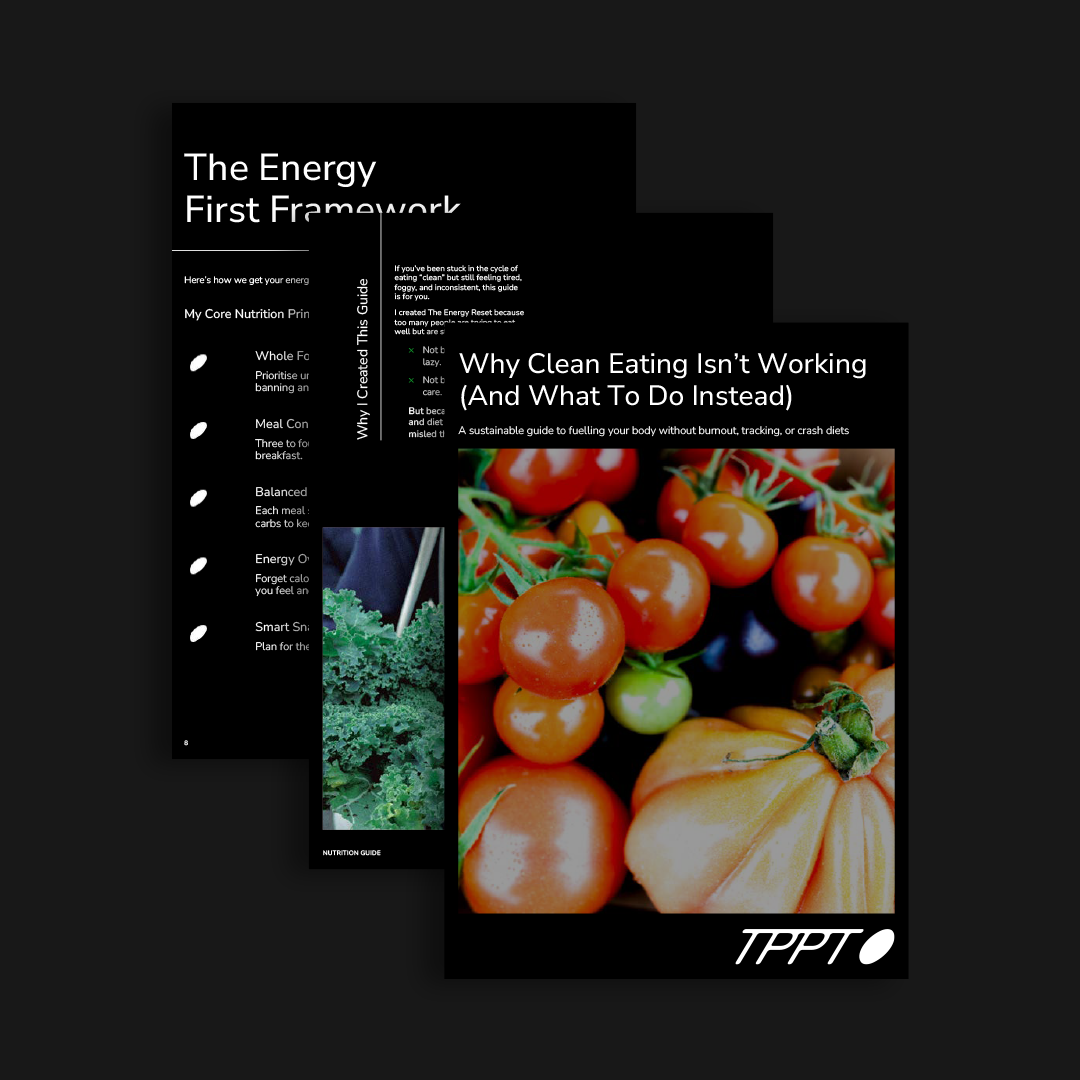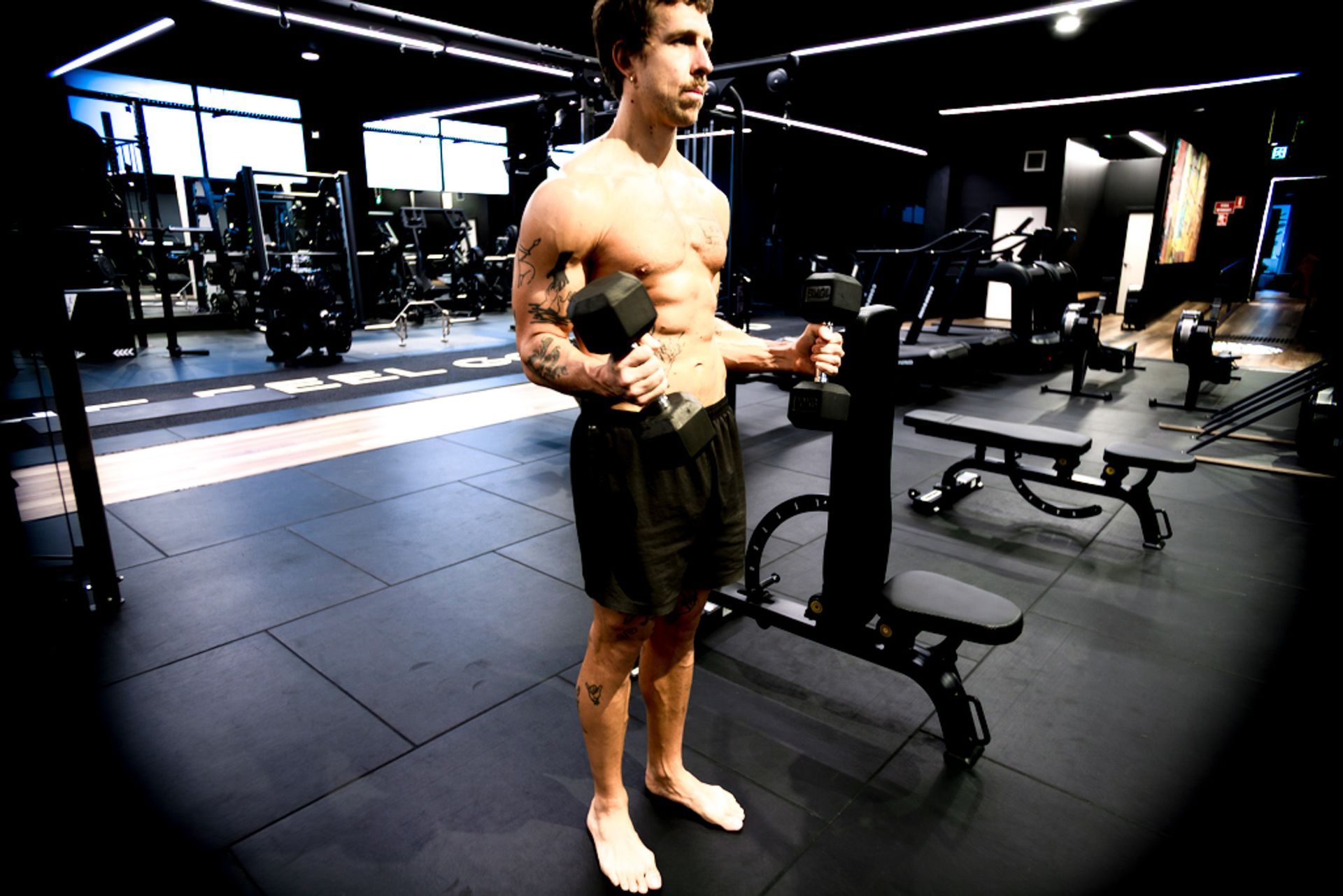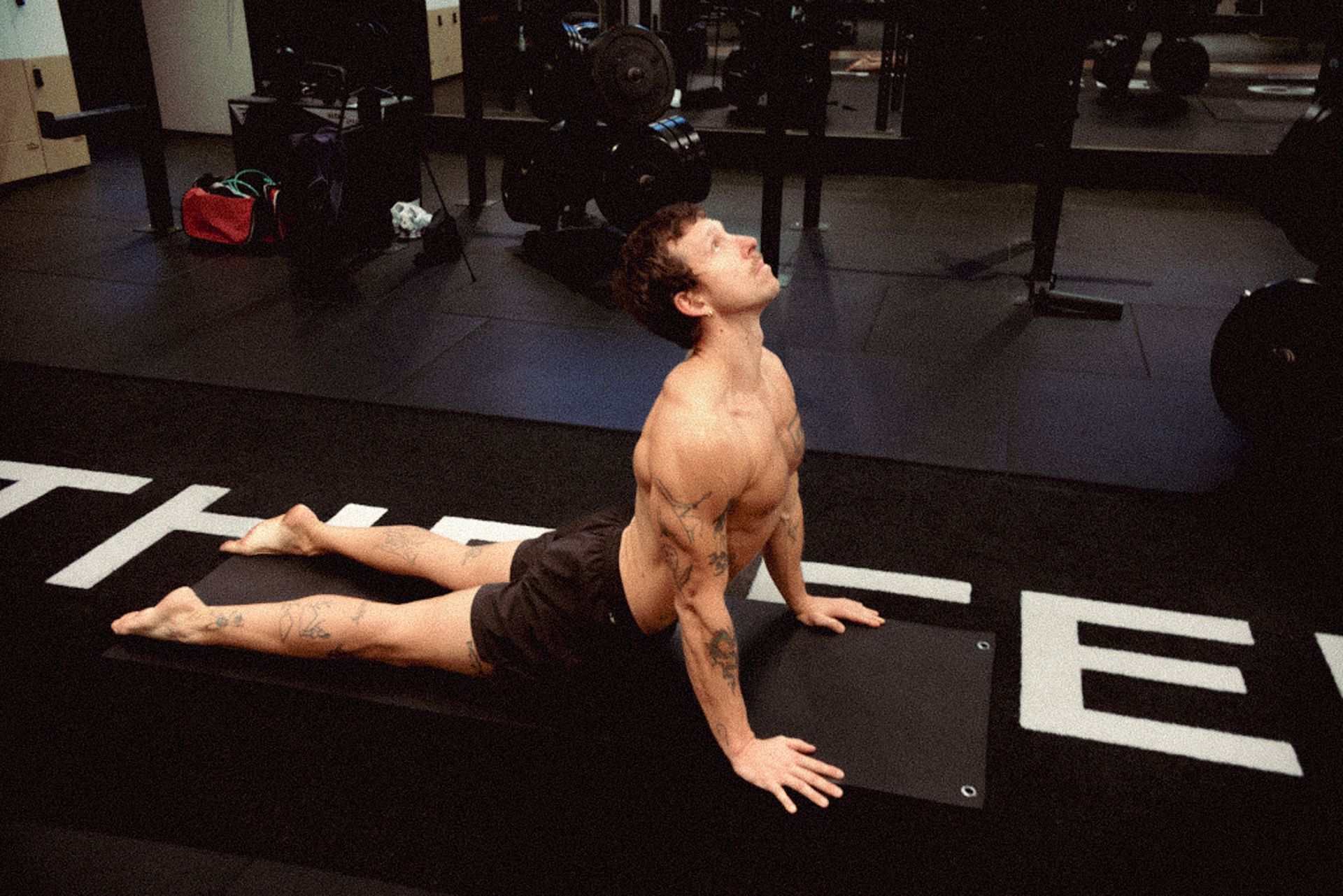How to Lose Belly Fat in 2 Weeks (Without Starving or Killing Yourself at the Gym)

You’ve got two weeks. Maybe there’s a wedding. Maybe a beach trip. Maybe you’re just sick of staring at that stubborn belly fat that doesn’t seem to move, no matter how “clean” you eat or how many push-ups you do.
And now you want results.. But not the kind that wreck your energy, metabolism, or mood.
The good news? You've landed in the right place.
You can make visible, measurable progress in just 14 days without crash diets, without living off lettuce, and without killing yourself at the gym. The secret lies in three things:
nutrition, movement, and recovery.
In this short article, I'll show you how to create a small calorie deficit, build lean muscle mass, and keep your body burning fat efficiently all day long.
Who am I and why should you listen to what I have to say?
I’m Tom Peacock, a personal trainer based in Melbourne. Over the years, I’ve coached hundreds of people through fat loss transformations, from busy professionals to new parents trying to find their footing again. But this isn’t a theory for me. I’ve lived it.
I’ve been the guy who tried every diet under the sun: keto, intermittent fasting, juice cleanses, low-fat, low-carb, vegan, you name it. I know what it’s like to feel stuck, frustrated, and out of control with food. And I also know what it takes to break through that cycle.
Through years of trial, error, and education, I learned how to build a body that works with you, not against you, one that burns fat, feels strong, and lasts for the long term.
So what you’re about to read isn’t another “fitness hack” or cookie-cutter plan. It’s a proven approach built on experience, evidence, and empathy.
Let’s get into it...

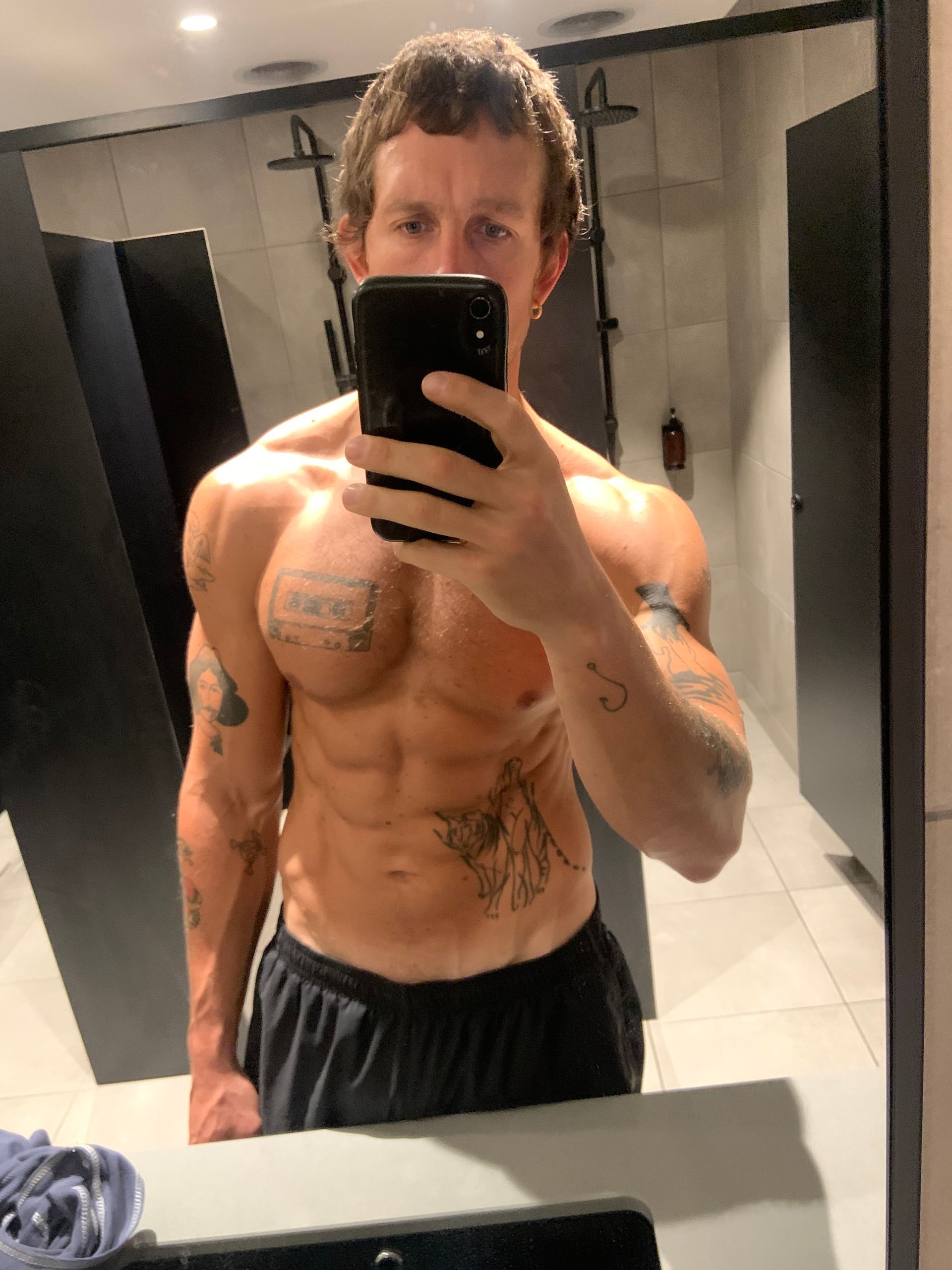
The Truth About Losing Belly Fat
Most people think belly fat is about willpower. It’s not.
It’s about hormones, habits, and energy balance.
The body stores belly fat, especially around the waistline, as a safety mechanism. That visceral fat isn’t just under the skin, it’s wrapped around your organs. And it’s linked to heart disease, type 2 diabetes, and insulin resistance.
The goal isn’t just to look better in a mirror. It’s to lower your health risks, stabilise your blood glucose levels, and improve your metabolic rate so your body becomes more efficient at burning fat.
Here’s what doesn’t work: extreme diets, skipping meals, or doing endless cardio.
Those approaches lower your body mass index temporarily but destroy your metabolism.
Want to know what else they do? They raise cortisol. When you raise cortisol, you actually hold more fat around the abdomen. No one wants that.
Here’s what actually works:
- Eating whole foods that keep you satisfied
- Prioritising lean proteins for fat burning
- Getting 10,000 steps a day
- Lifting weights to protect muscle mass
- Sleeping properly and managing stress levels
That’s how you create a genuine, sustainable fat-burning environment.
Step One: Build a Calorie Deficit Without Starving
Every weight-loss diet, from keto to intermittent fasting, works for one reason: a calorie deficit. You burn more energy than you eat.
But starving yourself is a losing game. Your body needs fuel, especially if you’re training. When you eat too few calories, your body starts breaking down muscle for energy, and your metabolic rate slows down.
A smarter approach is to eat around 10–20 per cent fewer calories than maintenance. That’s enough to lose body weight and shrink your waist circumference without burning out.
Start by cutting back on sugary drinks, processed snacks, and alcohol. Swap white bread for whole grains. Add more vegetables and high-fibre foods that fill you up while keeping calories low.
Small changes make a big difference. The thing is - 300–400 fewer calories a day, a latte here, a dessert there, adds up to around half a kilo of fat loss per week.
That's the big secret in the fitness industry: you don't need to be in that much of a deficit. The problem that the majority of people have is that they don't know how many calories are in the food that they eat.
That’s progress you can sustain.
Download my free guide, Why Clean Eating Isn't Working (And What To Do Instead): The Energy First Framework
Step Two: Prioritise Protein and Whole Foods
If there’s one nutrition rule to take seriously, it’s this: eat more protein.
A high-protein diet keeps hunger in check, preserves muscle while you’re losing weight, and supports your metabolism. Protein-rich foods also have a high thermic effect, meaning your body burns extra calories just digesting them.
Aim for 1.6–2.2 grams of protein per kilogram of body weight, or roughly 40–50 percent of your total calorie intake.
Good examples include:
- Chicken breast, turkey, and lean beef
- Fish, prawns, and eggs
- Greek yoghurt, cottage cheese, and protein shakes
Combine those with whole grains, vegetables, and a moderate amount of healthy fats like olive oil and avocado.
Carbs aren’t the enemy. They’re fuel. But keep them controlled. Around 30 percent carbs and 20 percent fats is a good balance for most people aiming for healthy weight loss.
This mix helps regulate insulin resistance, reduce fat storage, and keep you performing at your best in the gym.
Step Three: Move More Than You Think
Most people assume exercise means gym time. But the biggest calorie-burner in your day isn’t your workout, it’s your movement outside of it.
Your body burns calories constantly through non-exercise activity thermogenesis (NEAT). Walking, cleaning, carrying groceries, taking stairs, these low-level activities add up.
Getting 10,000 steps a day can burn 300–500 extra calories, the equivalent of a small meal. That’s free fat burning.
So park further away. Take walking breaks. Do your next meeting on foot. Those simple ways to move more will compound faster than you think.
And if you want to accelerate results, add short aerobic exercise or cardio exercise sessions like cycling, swimming, or incline walking.
Consistency beats intensity every time.
Note
If you want to fast track results, add sprinting or one or two high-intensity interval training (HIIT) sessions per week for an extra calorie burn and cardiovascular boost.
Step Five: Sleep, Stress, and Recovery
You can nail your eating plan and crush your workouts, but if you’re not sleeping, you’re fighting an uphill battle.
Lack of sleep increases cortisol, a stress hormone that tells your body to store fat, especially around the midsection. It also raises hunger hormones, making it harder to control your appetite.
Get seven to nine hours of quality sleep per night. Go to bed at a consistent time, limit screens before bed, and avoid heavy meals or alcohol in the evening.
Managing stress matters just as much. Chronic stress keeps cortisol high, leading to fat storage, higher blood glucose levels, and disrupted recovery.
Simple recovery tools like deep breathing, stretching, or even low-intensity walking can help your nervous system reset.
Step Six: Don’t Chase Quick Fixes, Build Habits
The biggest lie in the fitness industry is that you can “melt belly fat” overnight.
What you can do is trigger the right chain reaction:
Better nutrition → higher energy → better workouts → improved recovery → steady fat loss.
By week two, you’ll start to notice changes: a flatter stomach, lighter body weight, improved digestion, and clearer focus.
But this isn’t just about a two-week sprint. It’s the foundation for sustainable weight loss, better gut health, and lower risk factors for chronic disease.
Real change happens when you commit to the process, not perfection.
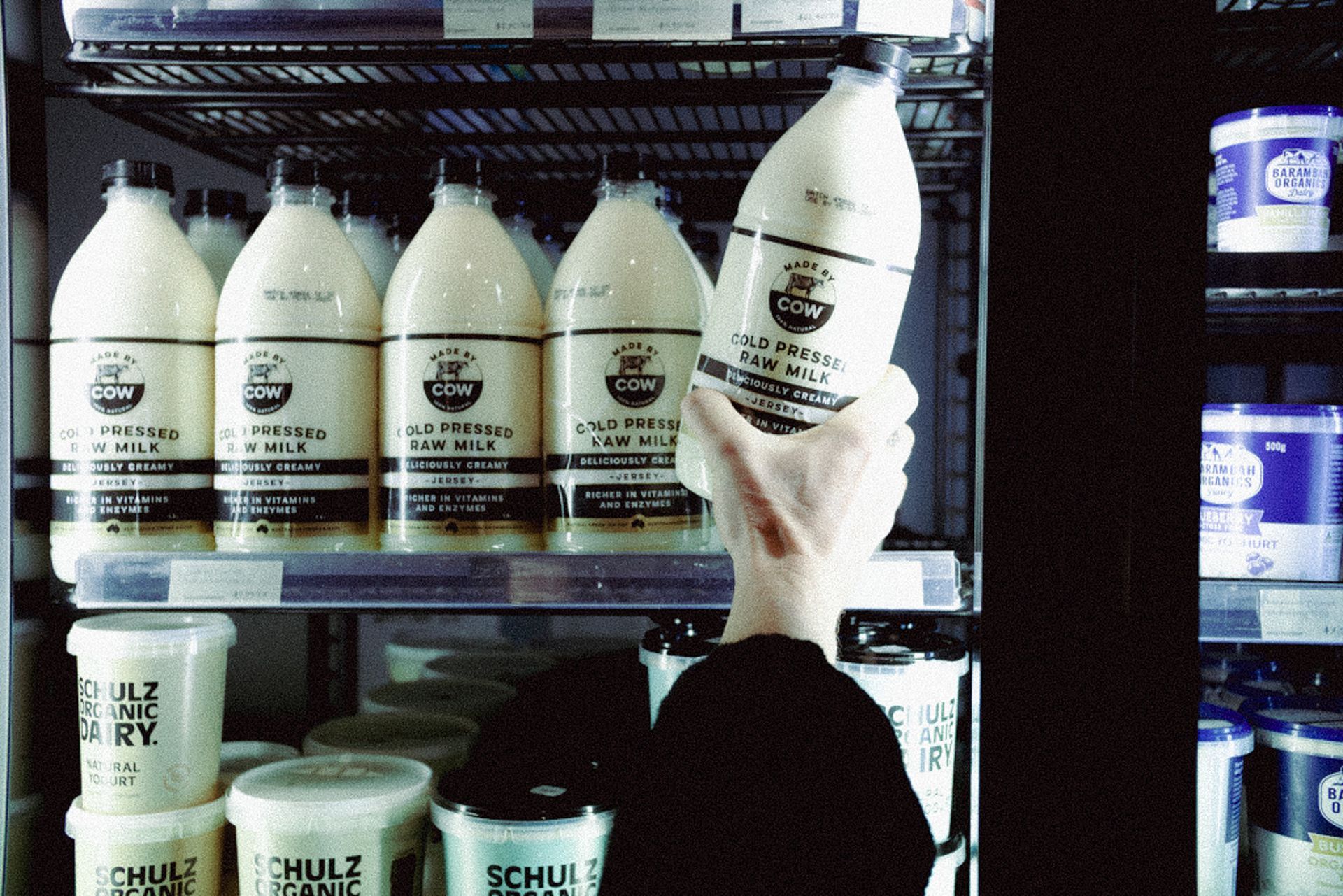
The Bottom Line
If you want to lose belly fat in two weeks, forget the gimmicks.
Do the basics, but do them exceptionally well.
- Create a calorie deficit by eating whole, high-protein foods.
- Move more, at least 10,000 steps daily.
- Train hard and smart with resistance training.
- Get enough sleep and manage your stress.
No detox teas. No starvation diets. No BS supplements.
If you’re ready to take control of your fitness with an expert-guided plan tailored to your goals, reach out and let's have a chat.
When you you work with me, you'll get results if you do the weigh ins and follow the plan. That's my guarantee or you get your money back.
I take care of all of this for you, you'll receive a personalised weight-loss plan that fits your lifestyle, activity level, and body type so you can lose fat, build strength, stack on lean mass and feel in control again.
FAQ
Undulating periodization is a training model where I vary training volume and training intensity across phases. A linear approach steadily increases intensity and reduces volume over time.
In contrast, undulating cycles between accumulation (higher volume, lower intensity), intensification (lower volume, higher intensity), and sometimes power focus phases. This keeps progress consistent and reduces the risk of plateaus.
As your body weight drops, your resting heart rate often decreases because your heart doesn’t have to work as hard to pump blood. Regular aerobic exercise and improved nutrition strengthen your cardiovascular system, increase circulation, and enhance endurance.
You may also notice a more consistent heart rate variability (HRV), which is a good indicator of better stress management and overall heart health.
For complete beginners, I usually recommend a simple linear program.
It builds a foundation of body strength, training load tolerance, and motor patterns. Once you have some training history, phase undulating periodization becomes a powerful tool.
Fat loss isn’t just physical; it’s deeply psychological.
When you eat nutrient-dense foods and move regularly, your body releases endorphins, serotonin, and dopamine, all of which improve mood and focus. You’ll also experience better quality sleep, fewer energy crashes, and improved self-confidence.
Many people find that as their body composition improves, their stress levels and symptoms of anxiety decrease too. It’s about more than weight; it’s about regaining control and mental clarity.
Yes. During hypertrophy focus phases, I program higher training volume, moderate loads, and rep ranges like 4×8 or 4×10.
This is ideal for building muscle hypertrophy and muscle mass. The following strength focus phase reinforces that by increasing your ability to lift heavier loads, which feeds back into more growth later.
Sugar cravings are normal, especially early in a weight-loss journey. The key is finding satisfying alternatives that don’t spike your blood sugar or cause energy crashes.
Smart swaps include:
- Greek yoghurt with fruit instead of ice cream
- 70–90% dark chocolate instead of milk chocolate
- Chia seed puddings or protein mug cakes for dessert
- Sparkling water or kombucha instead of soft drinks
These options provide fewer calories, more nutrients, and help regulate your appetite naturally.
Portion control is less about restriction and more about awareness. Try these simple strategies:
- Eat slowly and stop when you feel 80% full
- Use smaller plates or bowls
- Fill half your plate with vegetables or salad
- Pre-portion snacks instead of eating from the bag
- Focus on protein and fibre foods that naturally keep you fuller
When your meals include lean proteins, whole grains, and healthy fats, you’ll find it easier to eat less without feeling hungry.
Phases typically run 4–6 weeks, depending on your training goal and training history.
While you can’t isolate fat burning to one area, you can improve the environment that makes belly fat easier to lose.
Focus on:
- Reducing stress levels and improving sleep to lower cortisol
- Increasing muscle mass through strength training
- Avoiding ultra-processed foods that spike insulin and cause inflammation
- Eating high-protein meals to stabilise hunger hormones
When these systems are in balance, your body naturally starts tapping into stored belly fat more efficiently.
Alternating between high intensity and low intensity phases gives joints and connective tissue a break. Instead of constantly grinding heavy loads, undulation builds in natural recovery phases while still driving adaptation. This makes it one of the most sustainable long-term periodization programs.
Yes. Alcohol is full of empty calories that don’t provide nutrition but slow fat burning.
It also affects sleep quality, increases cortisol, and can make portion control harder due to reduced inhibitions and poor decision-making around food.
If you drink, keep it moderate, one or two drinks per week is fine. Opt for clear spirits or low-calorie options and always hydrate well.
Love handles are another form of stubborn fat storage, often caused by high-calorie diets, stress, and lack of movement.
You can’t spot-reduce them, but a mix of resistance training, cardio exercise, and core strengthening helps tighten and tone the area as total fat decreases.
Stick to a consistent workout routine, track your calorie intake, and prioritise protein. Over time, your body will draw from fat stores around your waistline as overall fat decreases.
Ultra-processed foods are designed to hijack your brain’s reward system. They combine sugar, fat, and salt in a way that releases large amounts of dopamine, making you crave more even when you’re full.
Over time, this creates neural adaptations similar to addictive behaviours, reducing sensitivity to natural hunger signals.
They also increase inflammation, disrupt gut bacteria, and elevate the risk of heart disease, obesity, and insulin resistance.
Replacing ultra-processed foods with whole foods helps restore normal appetite control and improves overall mental and physical health.
Yes. The approach outlined here works, but it works best when you personalise it.
Track your activity level, sleep quality, and stress levels just as much as eating the right foods. Those are the variables that determine how your body responds to change.
Small, consistent actions such as walking more, eating protein at every meal, and getting enough rest, compound faster than you think.
This is about building a stronger, more resilient body that you can maintain for life, not just two weeks.


